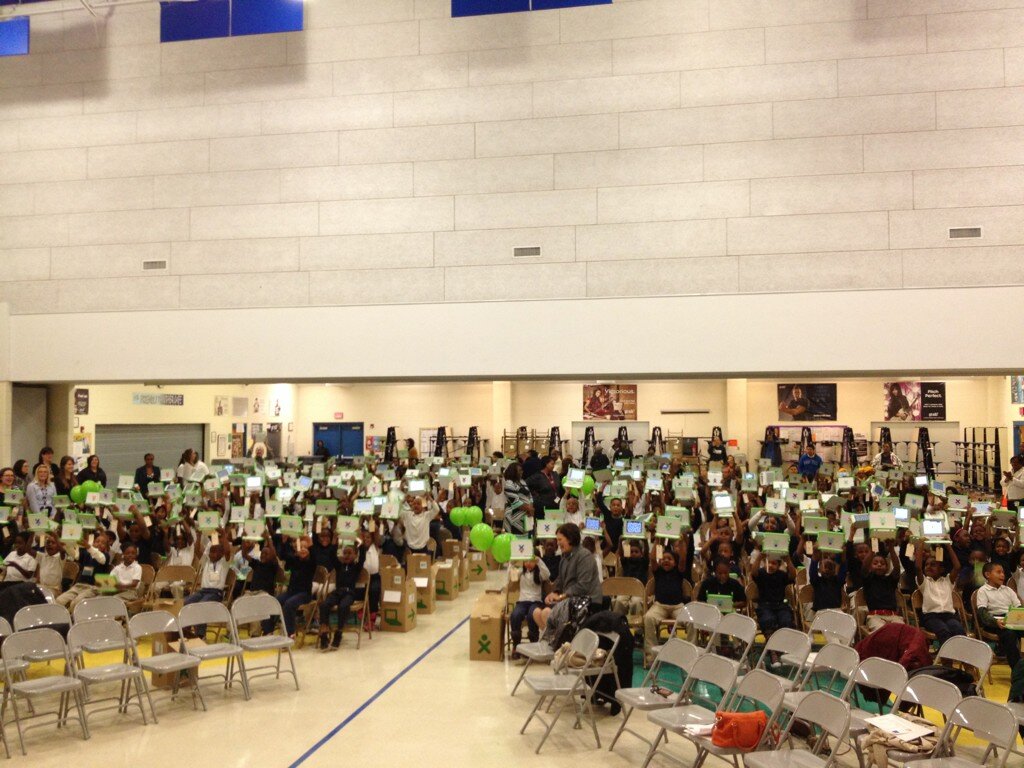The touchscreen hardware is, of course, only as good as its software support. Fortunately, the XO’s Sugar user interface is naturally well suited for touchscreen use, with large, clearly designed icons that users instinctively want to touch.
The changes that the team is undertaking to Sugar are simple and subtle, and designed to feel natural to both experienced Sugar users and newcomers.
Icons are moving for better spacing, they are getting enlarged and rearranged to make things work better for touch. The team is adding adding swipe-to-scroll gestures (also known as kinetic scrolling) to show the frame, pinch to zoom and touchscreen-style text selection.
Internally, Sugar has seen a major overhaul that will benefit users of all XOs and unlock modern touchscreen features. This work is intended to provide a solid foundation for the coming years of Sugar development.
The magic in these modern touches relies on heavy engineering, and to perform it OLPC has joined forces with a team from Open Source software consultancy called Lanedo to make Sugar work smoothly with multitouch.
To make the user interface ready for the XO-4’s multitouch capabilities the team has fixed and improved the graphical subsystem (X.org) and the UI toolkit (GTK+)—enhancements include support for gestures and better control over the look-and-feel of the UI, so that icons appear just so on screen.
One of the most exciting features is the new intuitive text selector. Thanks to the newly introduced handles that allow exact positioning, selecting text on the touchscreen now feels like a natural task. The on-screen keyboard is also tightly integrated, preventing applications from taking away the keyboard’s focus when scrolling. Furthermore, several commonly known gestures like zoom, rotate and swipe have been added to the Sugar environment.
A “little†keyboard to go along with Sugar
Sometimes you need to type something in eBook mode, or want to type in a language that is different from the keyboard layout that you have. Sugar now includes an outstanding on-screen-keyboard called “Maliit†(“little†in Tagalog). Just as any other tablet, the XO-4 can be put in eBook mode and still offer the option to open a web browser and type in a URL or a search term.
The team behind Maliit—OpenIsmus—has been working with OLPC to bring this best-of-breed on-screen-keyboard to the XO laptop and to integrate it with user experience. A lot of work goes into making sure that the keyboard appears at the right time, behaves and looks the right way.
This little keyboard opens a window for people working with multiple languages and accessibility. Some multicultural regions need 3 different scripts on the key caps; but only one can be put on the actual keys. Using the on-screen-keyboard, you can type in your language in any XO-4 Touch that you get your hands on.
For users that cannot type easily, but can drive a pointer of any kind, the on-screen-keyboard is an accessibility feature that can be enabled on any XO, even those without touchscreen.





